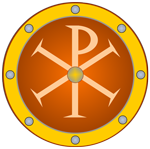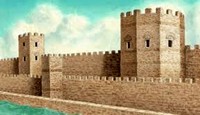
Siege of Constantinople |
year: 1260Ξθνε 1260 |
| A failed attempt by the Byzantines of Nicaea to recapture Constantinople | ★ ★ ★ ★ ★ |
|
enemy: Latins
|
location: Constantinople
|
accuracy:
●●●●●
|
|
battle type: Siege |
war: Nicaean-Latin Wars |
modern country:
Turkey |
| ▼ The Byzantines(emperor: Michael VIII Palaiologos) | ▼ The Enemies | |
| Commander: | Emperor Michael VIII Palaiologos | Emperor Baldwin II of Constantinople |
| Forces: | ||
| Losses: |
| Background story: |
| After the Fall of Constantinople to the Latins of the 4th Crusade in 1204, a first attempt was made by the Byzantines of Nicaea to recapture Constantinople in 1235 during the reign of John III Doukas Vatatzes.That attempt failed but under Vatatzes, the Nicaeans seized most of Thrace and Macedonia from Epirus and Bulgaria, becoming the strongest state of the region. Reduced to Constantinople and the territory around it, surrounded on east and west by Nicaea and without sufficient funds to attract any armed support, the Latin Empire seemed ripe for the taking by the time of Vatatzes' death. Even the papacy seemed willing to accept the inevitable in exchange for concessions in theological matters and the question of papal primacy. The Latin Empire had a break with Vatatzes' death, as his son and successor Theodore II Laskaris (r. 1254–1258) was forced to confront numerous attacks on his territories in the Balkans. Soon after Theodore II's death, the ambitious Michael VIII Palaiologos (r. 1260–1282) ascended the throne, at first supposedly as a guardian of the infant John IV Laskaris (r. 1259–1260). At this juncture, a coalition of Nicaea's enemies was formed, comprising Epirus, the Principality of Achaea, and the Kingdom of Sicily. The alliance however was dealt a crushing blow at the Battle of Pelagonia in summer 1259. With his chief enemies either dead, in captivity or temporary exile after Pelagonia, Palaiologos was free to target Constantinople. |
The Battle: |
 The siege started with a preliminary operation to isolate the city by capturing the outlying forts and settlements controlling the approaches, as far as Selymbria (some 60 km from the city). The attack on the walls started that involved the use of siege engines and attempts at undermining the walls. The operation was supervised personally by Michael from an elevated place. Part of the plan was an attack on the Galatas district, on the north side of the Golden Horn (outside the walls) with the aim of occupying the Galatas fortress in order to put the besieged in an even more difficult position. According to one version, Michael had a deal with a Frank noble who would betray his own and hand over the fortress to him. But for some reason the betrayal did not take place and the fort was not taken. In the meantime, boats with reinforcements from the city began to cross the bay of the Golden Horn to Galatas. Faced with this strong resistance and having information about the imminent arrival of aid to the Latins, Michael decided to leave and end the siege. |
Aftermath: |
| In August 1260, an armistice was signed between Michael VIII and Baldwin II for the duration of one year (until August 1261). Michael however started preparations for a new attack next year. The Byzantines were finally able to recapture Constantinople in 1261. |
|
|
